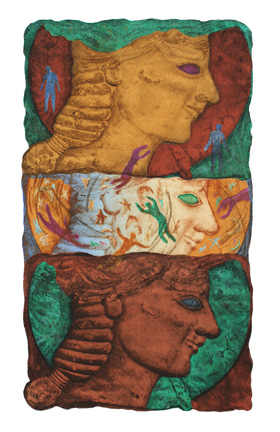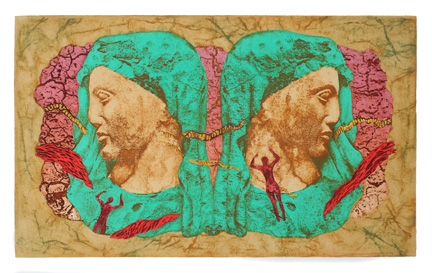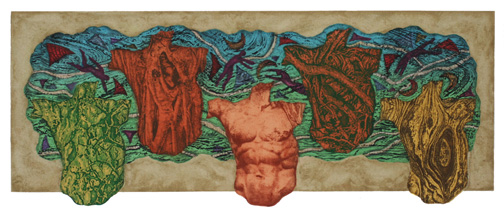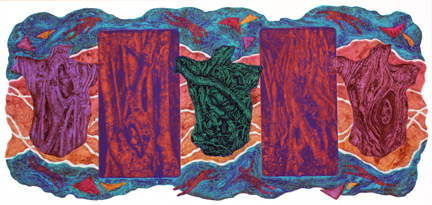Night Dreams© 1998. Linda C Everson28″h x 20″w framed
A CLUSTER is a group of similar things or people positioned or occurring closely together. My solarplate print Night Dreams, is currently in an invitational show, CLUSTER, at IceCube Gallery in Denver.
My dreams tend to have clusters of images, ideas, fears, or emotions [...]]]>
A CLUSTER is a group of similar things or people positioned or occurring closely together. My solarplate print Night Dreams, is currently in an invitational show, CLUSTER, at IceCube Gallery in Denver.
My dreams tend to have clusters of images, ideas, fears, or emotions that keep repeating themselves over and over. And I may have these dreams multiple times… sometimes months or years later. These are called “repetition dreams”. I quite often dream of flying, floating, or falling and I can’t ever stop that process.
In my print, Night Dreams, I included many small figures; some floating, some standing. The figures cluster, swirl, and lurk on top of and around the goddess faces. The multiple faces create a multi-tiered level of mystery. Sigmund Freud said that “dreams are the window to the sub-conscious”.
Bertil Vallien, who’s famous for his sandcasted glass sculptures, often included small floating figures in his vast boat and torso sculptures. His beautiful artwork influenced my own use of floating figures and also the use of vibrant color, transparency, and multiple layers of imagery.
A SOLARPLATE is a steel backed POLYMER PLATE that is light sensitive. Transparencies can be exposed unto the plates by sunlight or UV light boxes. In the Goddess series, I used Kodalith transparencies of photos of goddess faces which I spliced together after printing them in the darkroom. I drew the floating figures onto these transparencies with a opaque pen. After exposure, the solarplate was etched in water which dissolved the unexposed areas, creating textures in the plate.
To create the multiple “flat” background colors (greens, ochres, rust, tan) I made acetate cutouts (like a puzzle) which were rolled with the etching ink and then printed on paper on an etching press. Dark brown and ochre inks were then wiped onto the textured solarplate, and that was printed on top of the flat colors. This required tedious registration and many runs through the etching press to create all the layers of color.
Several years ago, I did a whole series of solarplate prints called the Goddess Series and another called the Torso Series, all based on Greek and Roman sculptures and reliefs which I photographed. In many of those prints, I included small floating figures that swirled through the larger figurative images and/or backgrounds. Some other Goddess and Torso prints that are not in the Exhibit and also are not on my website are depicted below. Please see my CONTACT PAGE is you’re interested in more information.



